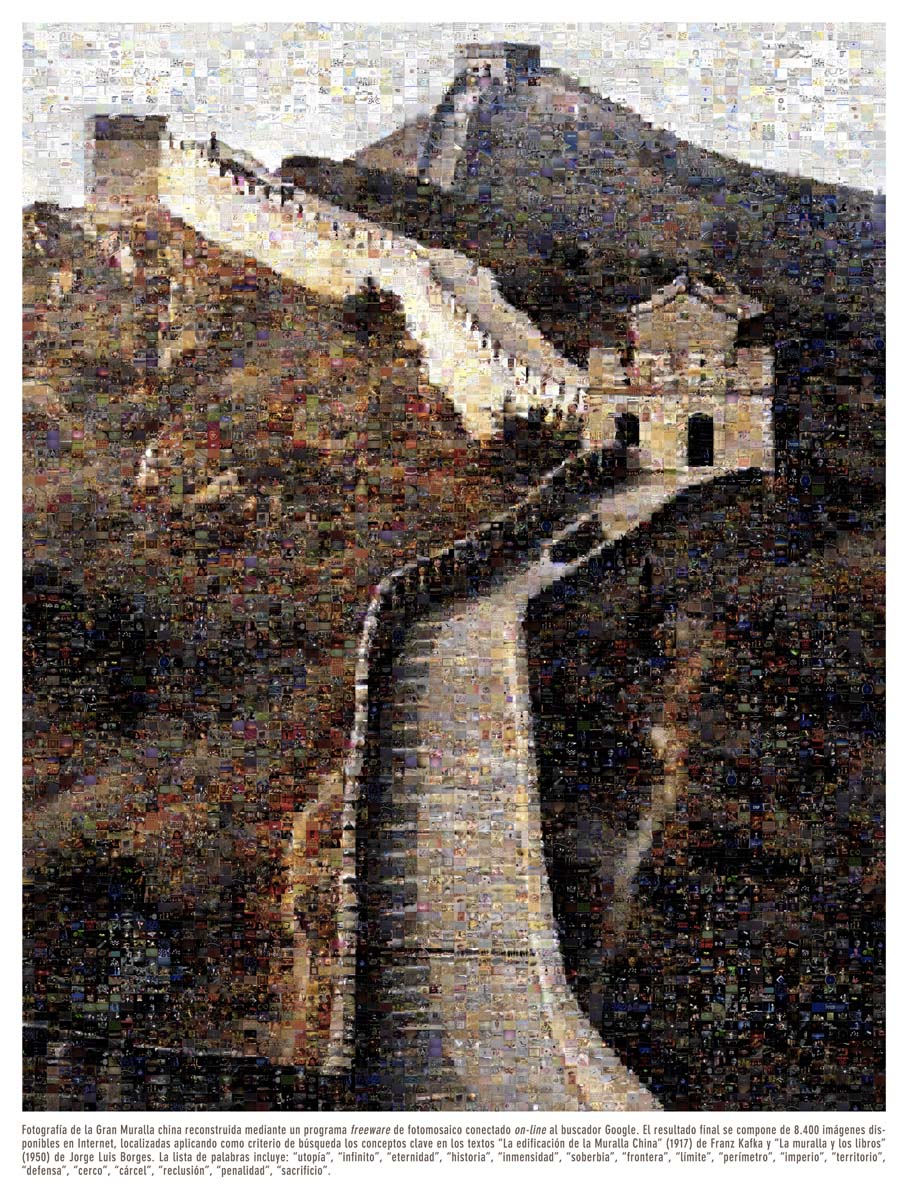Communication with the purpose of culturally promoting artists included in the Fundación María Cristina Masaveu Peterson Collection, works protected by intellectual property rights. Their total or partial reproduction or processing by any means, or their transmission or cession in any form is forbidden without the authorisation of the holder of the rights to the works.
© Joan Fontcuberta. VEGAP, Madrid 2024
Googlegrama: La Gran Muralla
Author:Joan Fontcuberta (Barcelona, 1955)
Title: Googlegrama: La Gran Muralla (The Great Wall)
Year: 2008
Technique: digital printing on cardboard
Dimensions: 158 x 119 cm
Edition: 1/5
The well-known works of Joan Fontcuberta included in this series propose a daring play between the Internet and photography, with nods to different cultures. In this work acquired by the María Cristina Masaveu Peterson Foundation at Madrid’s 2010 International Contemporary Art Fair (ARCO), the reference is China, through a composition of the Great Wall formed by 8,400 images extracted from Google search engine, creating a mosaic using photographic digitisation software where this winner of the 1998 National Photography Award plays with chance, irony and expressive force. The piece was created for the “Googlegramas” exhibition organised by the Cervantes Institute in its headquarters in Beijing in 2008, and since then it has been presented in other exhibitions dedicated to the Barcelona artist.
The images used in this work were obtained by searching the Internet for keywords such as utopia, infinity, eternity, history, immensity or pride, also including references to great masters of literature whose works relate to the famous monument, such as Franz Kafka’s “The Great Wall of China” and Jorge Luis Borges’s “The Wall and the Books”, among others. Throughout this ambitious project, Fontcuberta suggests reflections about utopia and reality, with photo-mosaic techniques that allow the reconstruction of an image-model based on a reticular structure of small cell images. At a distance we recognise the original model, but up close we appreciate the content of the many independent images that make up the reconstruction. The “Googlegramas” establish a poetic, dialectical and committed relationship between the words searched and the original, alternating the random operation, logical accidents, censors, filters and thematic hierarchies that the search engine imposes. Once again, Fontcuberta breaks moulds by breaking dogmas and pre-established frameworks to propose an unusual, aesthetic and symbolic dialogue with his original works.

